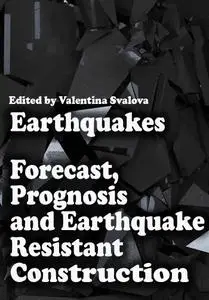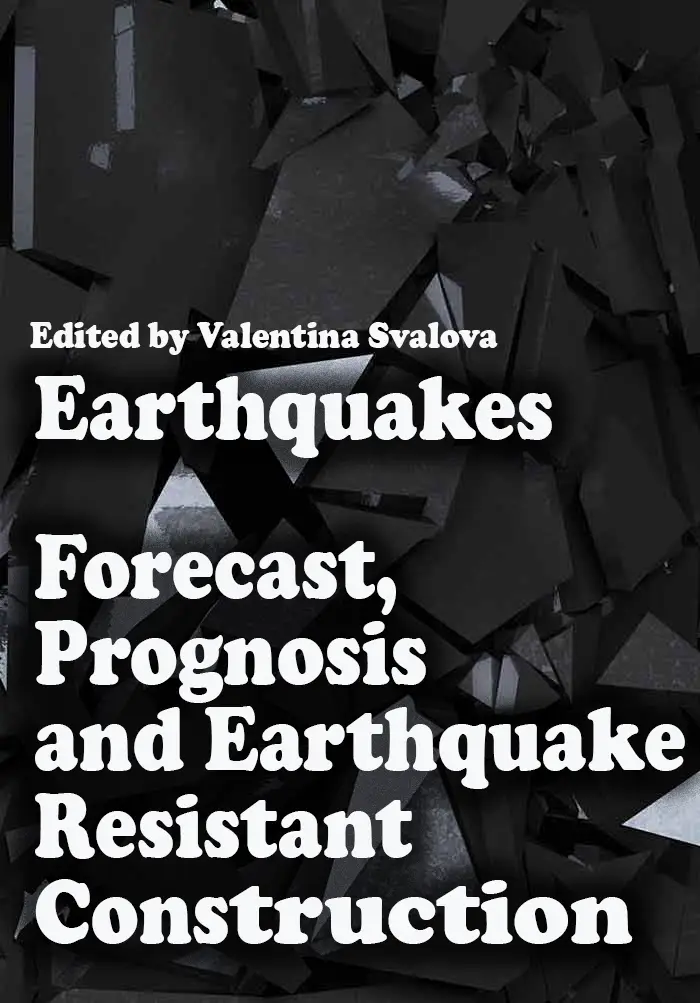"Earthquakes: Forecast, Prognosis and Earthquake Resistant Construction" ed. by Valentina Svalova
ITExLi | 2019 | ISBN: 1789239508 9781789239508 1789239494 9781789239492 | 315 pages | PDF | 79 MB
ITExLi | 2019 | ISBN: 1789239508 9781789239508 1789239494 9781789239492 | 315 pages | PDF | 79 MB
This book addresses the multidisciplinary topic of earthquake hazards and risk, one of the fastest growing, relevant, and applied fields of research and study practiced within the geosciences and environment. This book addresses principles, concepts, and paradigms of earthquakes, as well as operational terms, materials, tools, techniques, and methods including processes, procedures, and implications.
An earthquake is the shaking of the surface of the Earth, resulting from the sudden release of energy in the Earth's lithosphere that creates seismic waves. Earthquakes can range in size from those that are so weak that they cannot be felt to those violent enough to toss people around and destroy the whole cities. At the Earth's surface, earthquakes manifest themselves by shaking and sometimes displacement of the ground. When the epicenter of a large earthquake is located offshore, the seabed may be displaced sufficiently to cause a tsunami. Earthquakes can also trigger landslides and occasionally volcanic activity. Earthquakes are caused not only by rupture of geological faults but also by other events such as volcanic activity, landslides, mine blasts, and nuclear tests.
Contents
1.Introductory Chapter: Earthquakes, Life at Risk
2.The Earthquake Disaster Risk in Japan and Iran and the Necessity of Dynamic Learning from Large Earthquake Disasters over Time
3.The Major Cause of Earthquake Disasters: Shear Bandings
4.Development of an UAS for Earthquake Emergency Response and Its Application in Two Disastrous Earthquakes
5.Automated Model Construction for Seismic Disaster Assessment of Pipeline Network in Wide Urban Area
6.Frequency-Magnitude Distribution of Earthquakes
7.The Prediction of Earthquake Ground Motions by Regression Model
8.Principles of Probabilistic Seismic Hazard Assessment (PSHA) and Site Effect Evaluation and Its Application for the Volcanic Environment in El Salvador
9.An Estimation of “Energy” Magnitude Associated with a Possible Lithosphere-Atmosphere-Ionosphere Electromagnetic Coupling Before the Wenchuan MS8.0 Earthquake
10.Finite Element Models of Elastic Earthquake Deformation
11.Simulation of Broadband Strong Motion Based on the Empirical Green’s Spatial Derivative Method
12.Structural Seismic Input Model on the Condition of Slope Site
13.Damage Estimation of a Steel-Framed Building under Tsunami Flow Occurring after Earthquake
14.Structure-Soil-Structure Interaction between Underground Structure and Surface Structure
15.Tunnel Vaults under Seismic Excitation
16.Use of Polyethylene Terephthalate Fibers for Strengthening of Reinforced Concrete Frame Made of Low-Grade Aggregate
17.EQ-grid: A Multiaxial Seismic Retrofitting System for Masonry Buildings
1st true PDF with TOC BookMarkLinks
More : You find here



